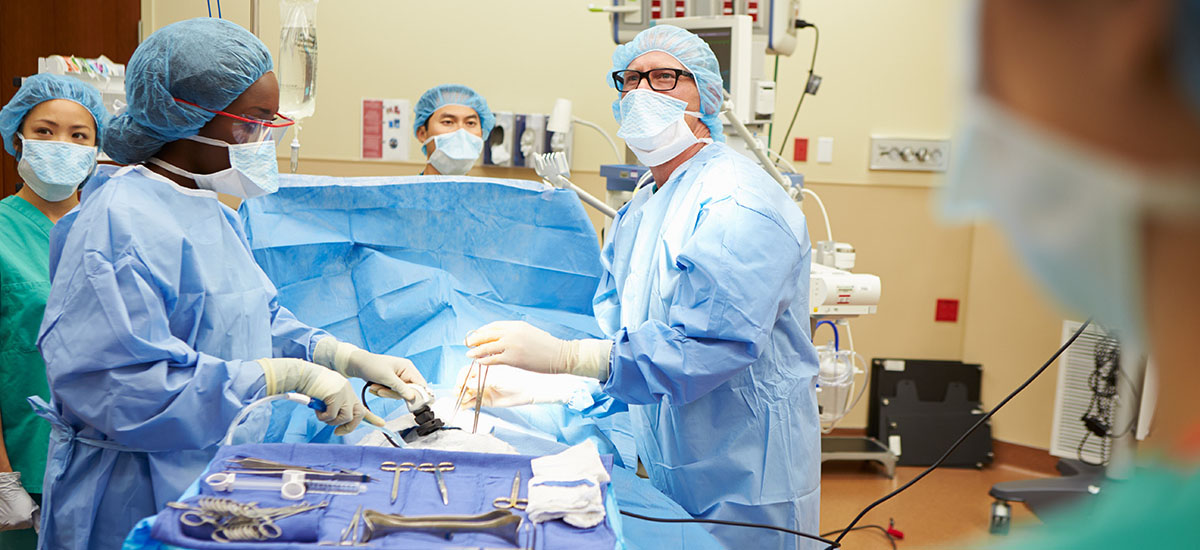Learn more about your options for Gastrointestinal procedures at MemorialCare Surgical Center at Orange Coast.
Thank you for choosing our center, the information in this section was created to help inform our patients of what to expect during their GI Procedure. Below is a list of the types of procedures offered at our center. We also have a comprehensive checklist of what to do as you prepare for your procedure. We’re available if you have any questions or concerns.
Colonoscopy:
What is a Colonoscopy?
A colonoscopy is a procedure performed by a physician, usually a gastroenterologist, in order to examine the colon (large intestine) and the rectum. This procedure is performed quite widely around the world, and the number of procedures is growing each year.
During the colonoscopy procedure, a device called a colonoscope is used. The colonoscope is a long, flexible tube about the size of a finger, with a camera at the end. The camera allows visualization of the interior of the large intestine and rectum.
The colonoscopy procedure is useful for the physician in the investigation of possible causes of pain in the intestines, intestinal or rectal bleeding, chronic constipation or diarrhea, and other intestinal problems such as inflammatory bowel disease. The colonoscopy procedure is a standard part of colorectal cancer screening in people aged 45 years or older and for people who have tested positive for blood in their stool. Colonoscopy can be used for locating, taking tissue samples (biopsy), or removing intestinal polyps and other types of abnormal tissue found during the examination.
Colonoscopy Screening and Diagnostics
Thank you for choosing MemorialCare Surgical Center at Orange Coast. You have been recommended to our facility by your physician for either a screening or diagnostic colonoscopy. Please read this page in its entirety as it will help you further understand the national guidelines.
Screening Colonoscopy vs. Diagnostic Colonoscopy
What is a Screening Colonoscopy and how does it turn into a Diagnostic Colonoscopy?
The definition of a screening colonoscopy is as follows:
A colonoscopy that is performed on a patient that does not have any signs or symptoms in the lower GI anatomy prior to the scheduled test.
Any symptoms such as a change in bowel habits, diarrhea, constipation, rectal bleeding, anemia, etc. prior to the procedure and noted as a symptom by the specialists/your physician will change your benefit from a screening to a diagnostic colonoscopy.
- Please note, if you have had a colonoscopy within the last 10 years and the result indicated that you had colon polyps, you are NOT eligible for a preventative screening benefit. You have a prior history of colon polyps. Your colonoscopy is now a surveillance of the colon and is considered diagnostic.
- If you are under the age of 45 and are scheduled for a screening colonoscopy, you may not be eligible for preventative screening benefits. We do verify your insurance benefits as a courtesy; however, it is your responsibility to know your insurance benefits. Please contact your insurance company’s member services with any benefit questions prior to your procedure.
- Please be advised that if during the procedure your doctor finds a polyp or tissue that must be removed for pathological testing, these specimens are NOT covered by the preventative screening benefit and will be applied toward your deductible, co-insurance, and/or copay.
Esophagogastroduodenoscopy
What is an EGD?
The EGD or Esophagogastroduodenoscopy procedure is also known as an upper endoscopy. This procedure is performed by a physician, usually a gastroenterologist, and is used to examine the inner lining of the esophagus, stomach and the first part of the small intestine (duodenum).
During this procedure, an endoscope or gastroscope, which is a long, flexible, finger-width tube with a camera on the end, is placed into the mouth and advanced down the throat into the stomach and then into the first part of the small intestine. During this procedure, the physician is able to visualize the tissues on a video monitor.
This procedure is performed in order to diagnose and even treat conditions of the upper part of the digestive tract from the mouth and throat, down through the esophagus, the stomach and into the first part of the small intestine. Your physician may use this procedure to investigate the causes of nausea, vomiting, abdominal pain, difficulty swallowing, gastrointestinal (GI) bleeding, and reflux disease (chronic heartburn/GERD). This procedure can be used by your physician to collect samples of tissue (biopsy) to aid in the diagnosis of certain conditions such as inflammation, and cancers of the GI tract. Additionally, the physician can use certain tools along with the gastroscope to treat certain disorders such as narrowing of the esophagus, removal of a polyp, or removal of a foreign object stuck in the GI tract. A gastroscope is a versatile tool in helping the physician visualize certain structures inside the body.
Additional Information
The surgery center does not have access to prep instructions as each physician prescribes different preps with specific instructions.
Please contact your physician’s office regarding questions about your prep, medication, eating and drinking instructions or arrival time.
Billing of your procedure:
The correct coding of your procedure is driven by your physician and your medical history. Your insurance company will be billed according to the outcome of your procedure using the correct modifiers and diagnosis codes as provided by your physician.
References
Rees, C. J., et. al., (2016). Expert opinions and scientific evidence for colonoscopy key performance indicators. Gut, 65(12), 2045–2060. https://doi.org/10.1136/gutjnl-2016-312043
www.mayoclinic.org/tests-procedures/colonoscopy/about/pac-20393569
Pluta RM, Lynm C, Golub RM. Colonoscopy. JAMA. 2011;305(11):1154. doi:10.1001/jama.305.16.1154
